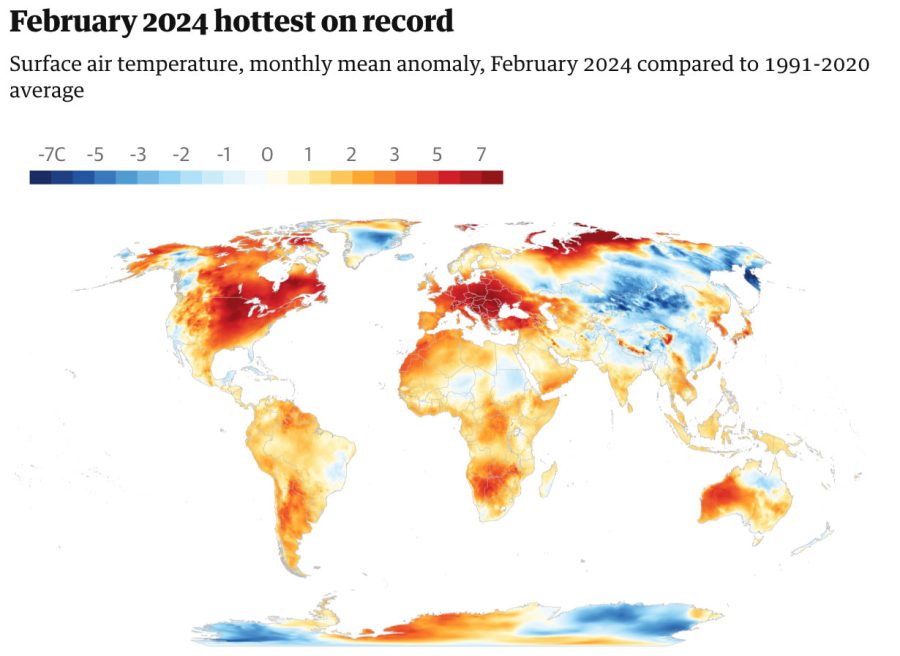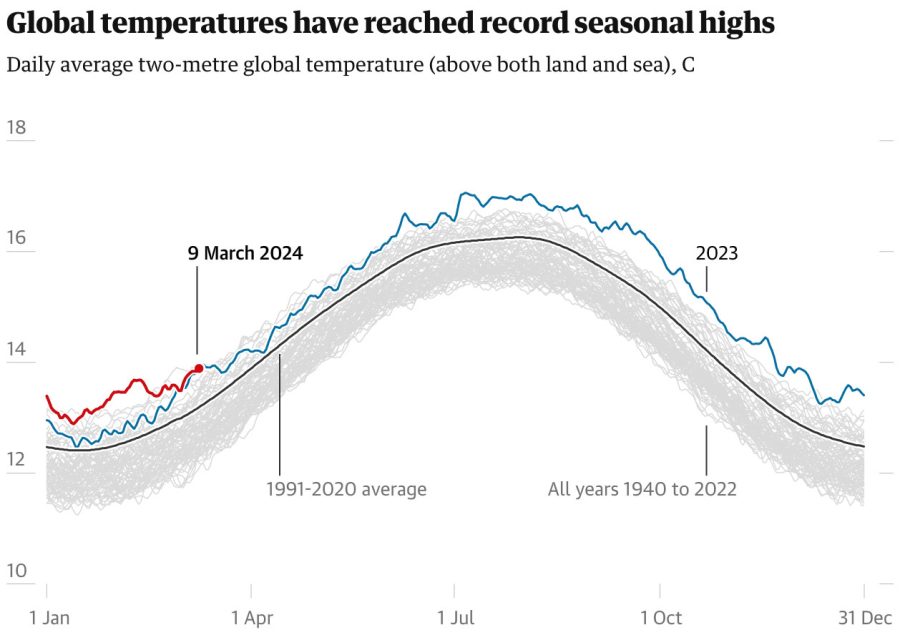Scientists Are Sweating Over Freakishly High Marine Heat
While some experts believe global temperature anomalies adhere to climate crisis predictions, others are alarmed by the speed of change.
Article body copy
This story was originally published by The Guardian and is reproduced here as part of the Climate Desk collaboration.
Record temperatures in 2024 on land and at sea have prompted scientists to question whether these anomalies are in line with predicted global heating patterns or if they represent a concerning acceleration of climate breakdown.
Heat above the oceans remains persistently, freakishly high, despite a weakening of El Niño, which has been one of the major drivers of record global temperatures over the past year.
Scientists are divided about the extraordinary temperatures of marine air. Some stress that current trends are within climate model projections of how the world will warm as a result of human burning of fossil fuels and forests. Others are perplexed and worried by the speed of change because the seas are the Earth’s great heat moderator and absorb more than 90 percent of anthropogenic warming.
Earlier this month, March 2024, the World Meteorological Organization (WMO) announced that El Niño, a naturally occurring climate pattern associated with the warming of the Pacific Ocean, had peaked and there was an 80 percent chance of it fading completely between April and June, although its knock-on effects would continue.
The WMO secretary general, Celeste Saulo, says El Niño contributed to making 2023 easily the warmest year on record, although the main culprit was emissions from fossil fuels.
When it comes to oceans, she says, the picture is murkier and more disturbing: “The January 2024 sea surface temperature was by far the highest on record for January. This is worrying and cannot be explained by El Niño alone.”
Sea surface temperatures in February 2024 were also hotter than any month in history, breaking the record set in August 2023, according to Europe’s Copernicus satellite monitoring program.
Worldwide, the heat above the land and sea was remarkable. Between February 8 and 11, 2024, global temperatures were more than 2 °C above the 1850–1900 average. Over the month as a whole, Europe experienced heat that was 3.3 °C above that benchmark.
Carlo Buontempo, the director of the Copernicus Climate Change Service, says it was a taste of what’s to come because of the increase of greenhouse gases in the atmosphere: “Unless we manage to stabilize those, we will inevitably face new global temperature records and their consequences.”
Heat records are becoming the norm, but the extent of the anomaly above the seas has prompted concern.
Carlos Nobre, one of Brazil’s most influential climatologists, says no climate model accurately predicted how high sea surface temperatures would reach during the past 12 months. Given the continued heat over the sea, he says 2024 is likely to be another unusually hot year for the world as a whole.
The anomaly is strongest in the North Atlantic, where Brian McNoldy, a climatologist at the University of Miami in Florida calculated the deviation from statistical averages as a one-in-284,000-year event. “It has been record-breaking warm for an entire year, often by seemingly impossible margins,” he tweeted. He has described the trends as “deeply troubling.”
Zeke Hausfather, a scientist at Berkeley Earth, a US nonprofit, says global sea and surface temperatures are “quite high” but are still well within the projections of climate models: “We don’t have any strong evidence yet from observations that suggests the world is warming faster than anticipated given human emissions.”
The impacts on corals and other forms of marine life are incalculable. Australia’s Great Barrier Reef is suffering its fifth mass bleaching event in eight years. Meteorologists warn that high surface temperatures may also presage a longer and more active hurricane season.
Raúl Cordero Carrasco, a climate professor at the University of Groningen in the Netherlands and the University of Santiago, Chile, says the growing possibility of a cooling La Niña between June and August could bring respite from the global heat, but this would only be temporary: “All recent temperature records will likely be broken sooner rather than later. The situation will continue to deteriorate until we halt the burning of fossil fuels.”





